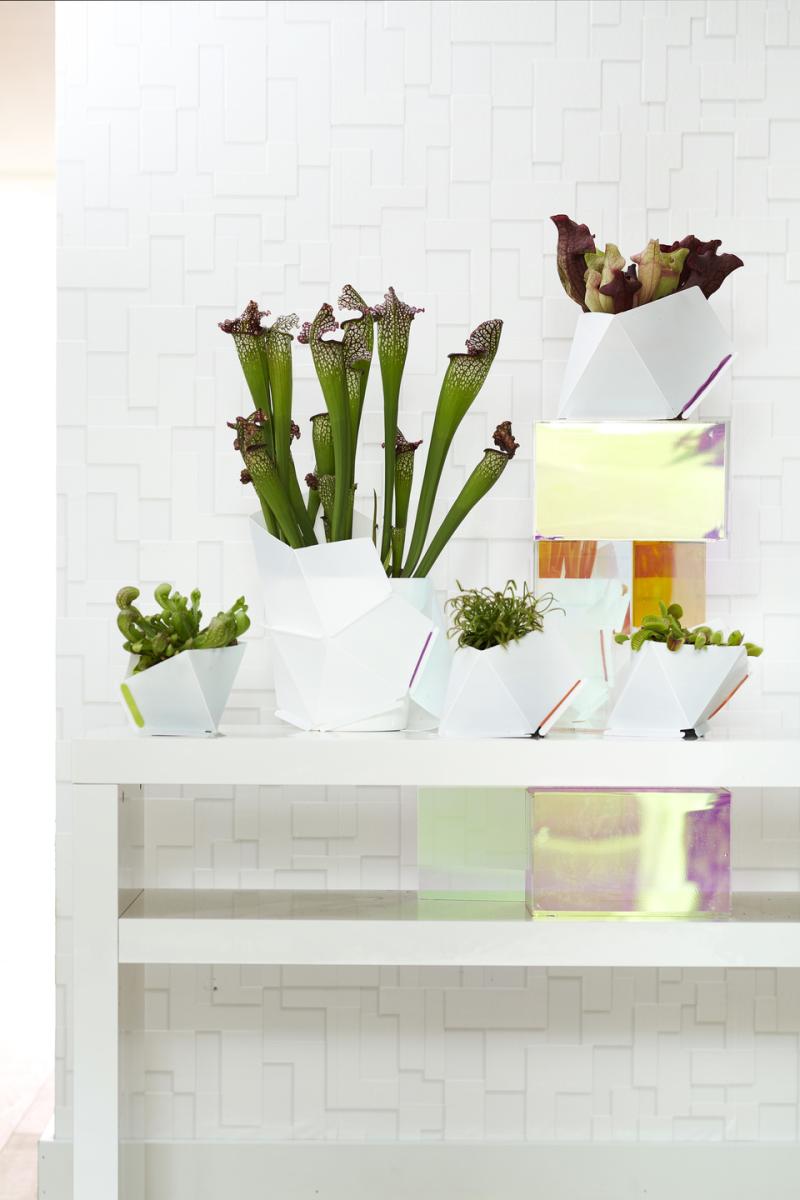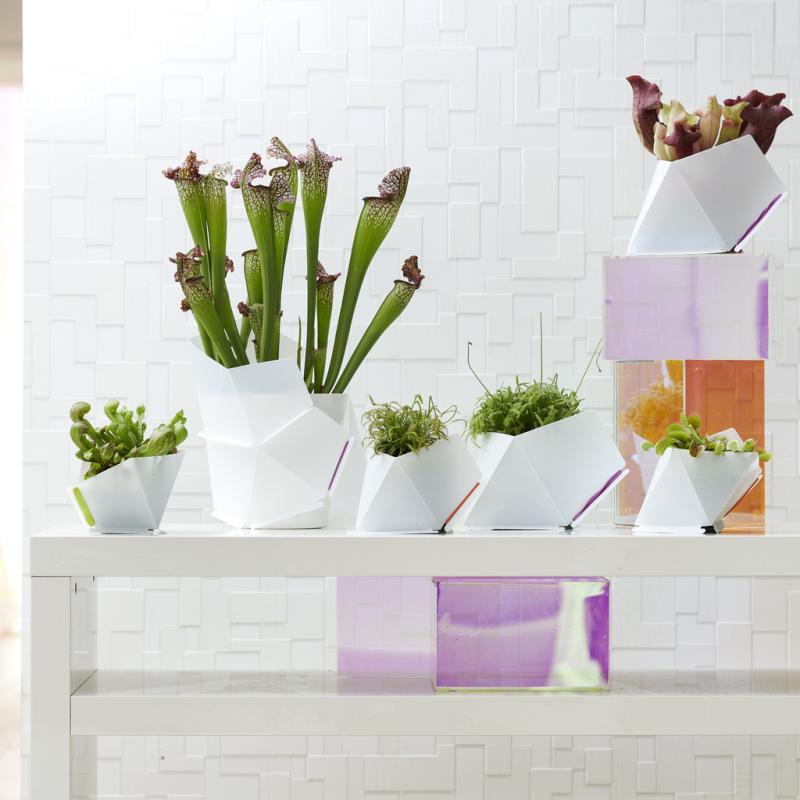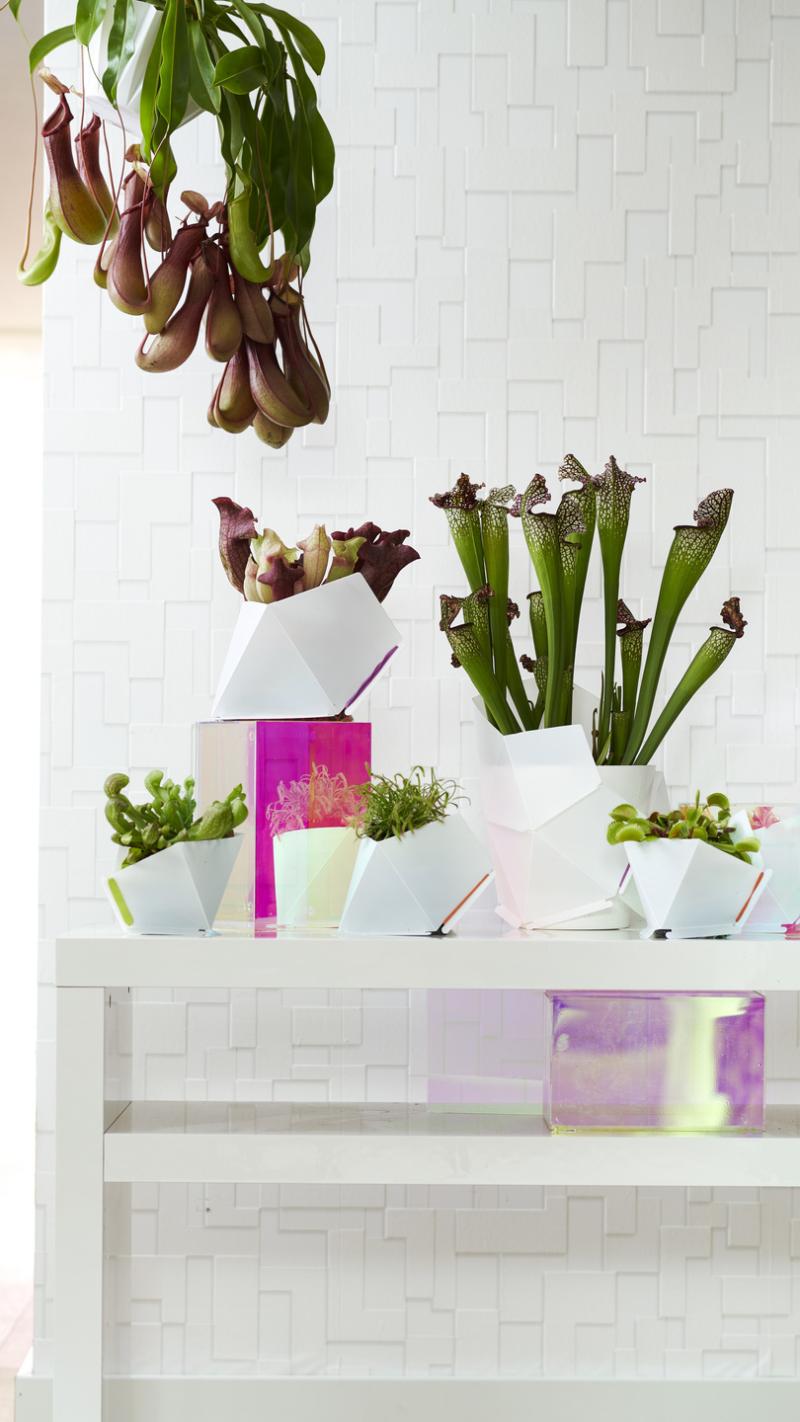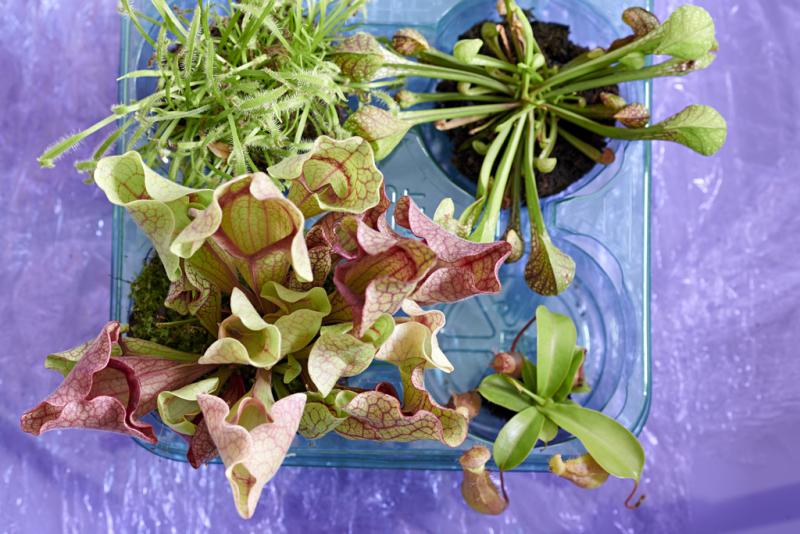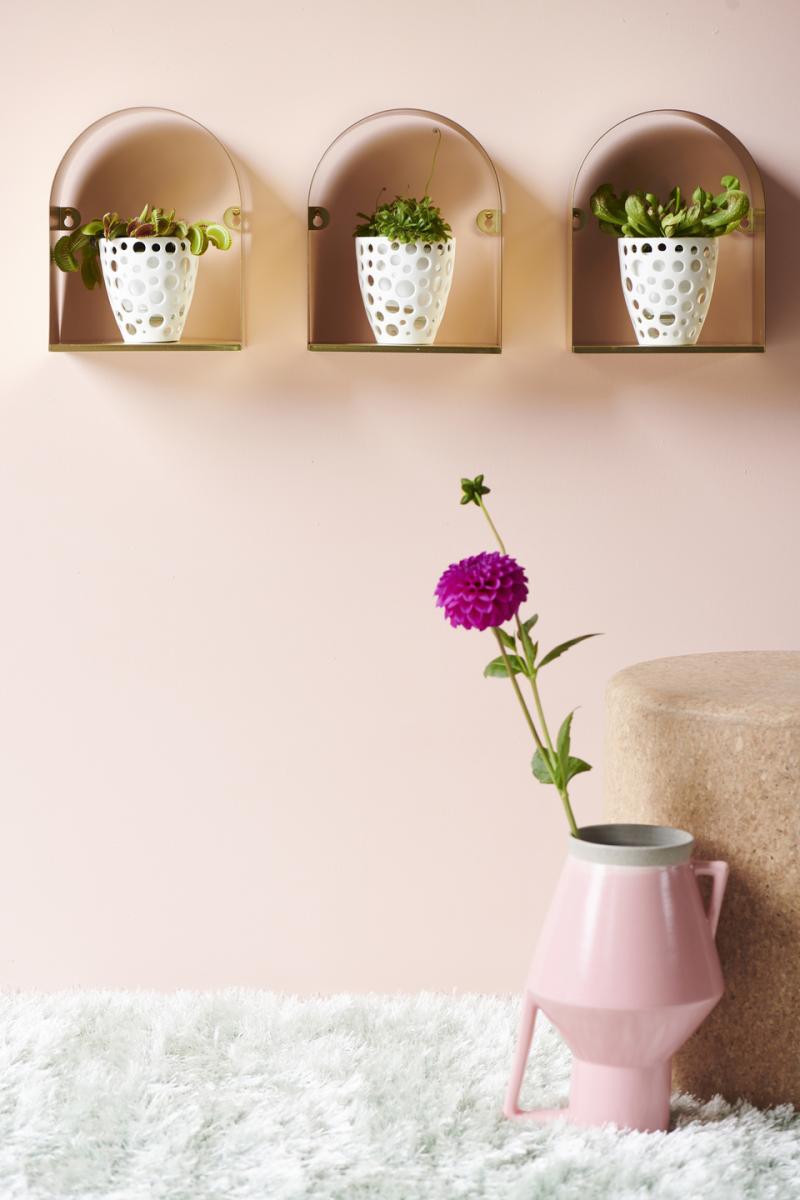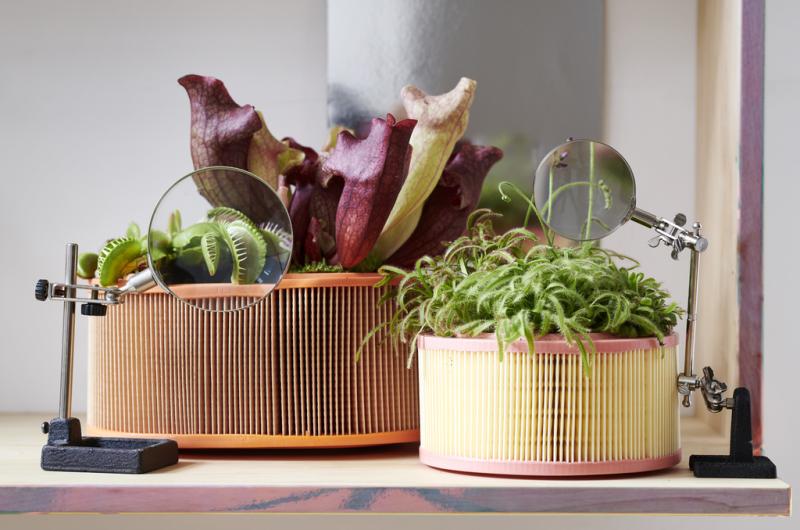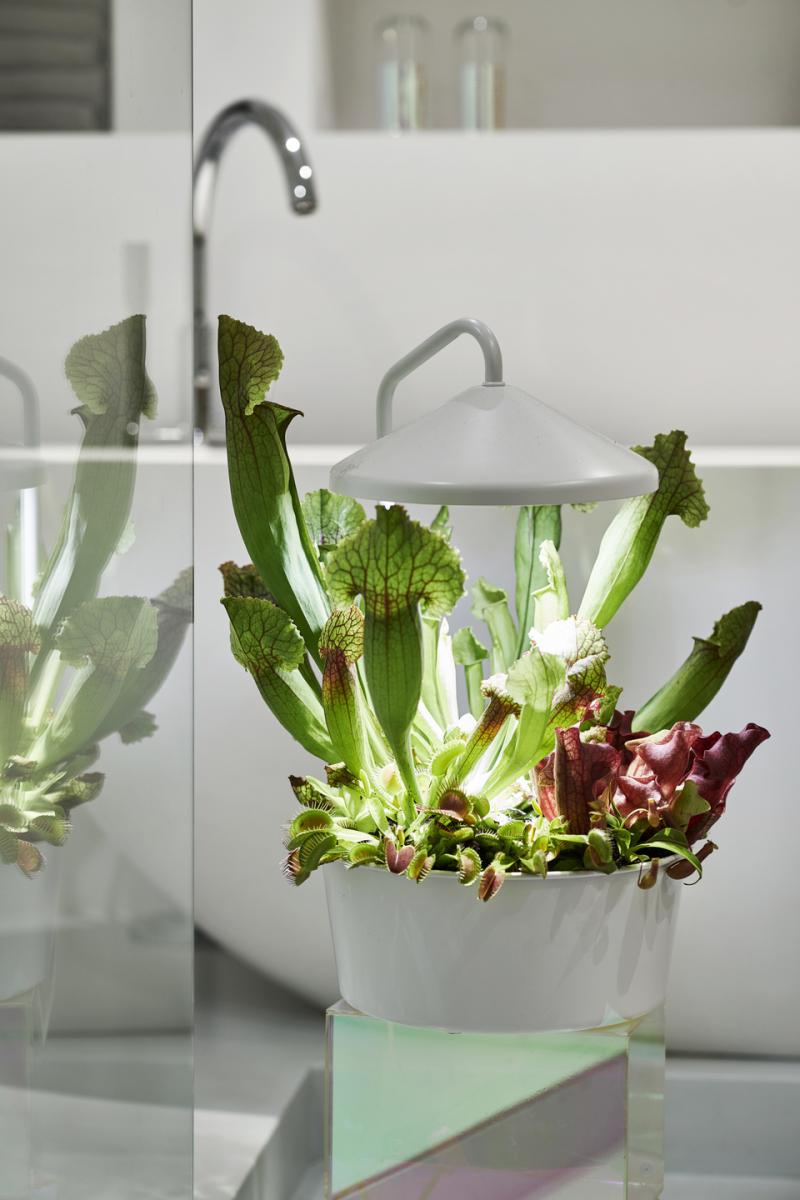Carnivorous plants: August Houseplants of the Month 2019
Freakish to look at, unusual shapes and a good story: carnivorous plants attract spiders and insects with their colourful and bizarre appearance. They then catch and digest these creatures to obtain their nutrients. The best-known Carnivorous plants are the Venus flytrap (Dionaea muscipula), Sarracenia, sundew (Drosera) and pitcher plant (Nepenthes).
Their hunting techniques differ from plant to plant. The Venus flytrap uses trap leaves that slam shut incredibly quickly. With sundew the prey gets stuck to the leaves with tentacles. Ingenious: Sarracenia's leaves are pitcher-shaped and insects are trapped in them. Nepenthes also uses pitchers that hang from the ends of the leaves.
Origin
In the wild Carnivorous plants grow in fairly damp regions with nitrogen-poor soil such as swamps. Nepenthes does that in Southeast Asia, the Venus flytrap and Sarracenia come from North America, and sundew grows on all the continents apart from Antarctica.
What to look for when buying Carnivorous plants?
• When buying carnivorous plants, the pot size is the most determining factor for the price.
• For each species the colour, the length of the pitcher (Nepenthes) or trumpet (Sarracenia) and the number of leaves (sundew) can also play a role.
• The plants’ soil must be sufficiently damp when buying.
• Their need for high humidity and light means that they cannot spend a long time standing at the point of sale. Watch for drying out or yellowing leaves.
Range and assortment
Pitcher plant (Nepenthes) is a soloist, whilst Venus flytrap (Dionaea), sundew (Drosera) and Sarracenia are often offered in mixed trays.
Pitcher plant This bizarre feature plant’s pitchers range in length from a few centimetres up to more than 30cm. They are actually distorted leaves that develop when the plant gets enough light. Insects find nectar on the lid above the pitcher and creep around into the pitcher in search of more. Just beneath the edge of the pitcher they find more nectar, but directly below it is a wax slide. They slip on this and so fall into the pitcher. The insects’ struggles activate the glands in the pitcher which then release a strong acid. In the space of two days this acid digests the insects. Only the insect’s casing remains. The plant grows on trees as an epiphyte.
Venus flytrap is the most spectacular of the carnivorous plants. The leaves of this carnivore consist of two parts that can slam shut. Contact by an insect or small spider triggers the closing mechanism. However, the plant is not easily fooled. To be sure that the prey is present, they must touch the six sensor hairs on the leaf twice. If they're touched once the leaves do not snap shut.
Sundew forms perfect rosettes on the ground and is equipped with red tentacles with a sticky, glistening drip at the end. This gives the flower its English name: sundew. Small beasties get stuck in the drip and are pushed by the agile tentacles towards the leaf surface, where they are digested.
Sarracenia is very effective at catching insects. The plant lures the creatures with nectar, and they then tumble into the pitchers where they are digested.
Care tips for customers
• Most carnivorous plants like full sun.
• Simulate a swamp environment: the plants like acidic damp potting soil.
• Carnivorous plants prefer to drink rainwater, distilled water or soft tap water. If you live in an area with hard water, boil it and leave to cool before serving.
• They don’t need any plant food - they catch their own meals.
• Remove dead brown leaves and pitchers to prevent fungi.
• Repot the carnivores in the spring every other year.
• Don’t give carnivores any meat; this will cause the traps to rot.
• The plant’s traps will wither in winter. Don’t worry - they will reappear in the spring!
Sales and display tips
Small Carnivorous plants do well in open and closed terrariums or in a large low bowl that can be set up as a mini swamp. Offering these ready-made arrangements helps remove the idea that carnivores are complicated, whilst they’re actually very easy to care for. The larger specimens look best in their own cachepots but can provide interesting tableaux when grouped together. Nepenthes is a real soloist that is best left to hang freely to show off its spectacular pitchers. The plants’ primeval look contrast nicely with modern geometric cachepots. For a more natural display the table can be dressed with bark, stones and water plants.
Images of Carnivorous plants
You can download and use the images below free of charge if you credit Thejoyofplants.co.uk.
Instagram: @thejoyofplants
Facebook: @thejoyofplants
Twitter: @thejoyofplants
For more information about the 2019 Houseplants of the Month selection, click here.
Carnivorous plants poster
You can download the poster using the link below.

